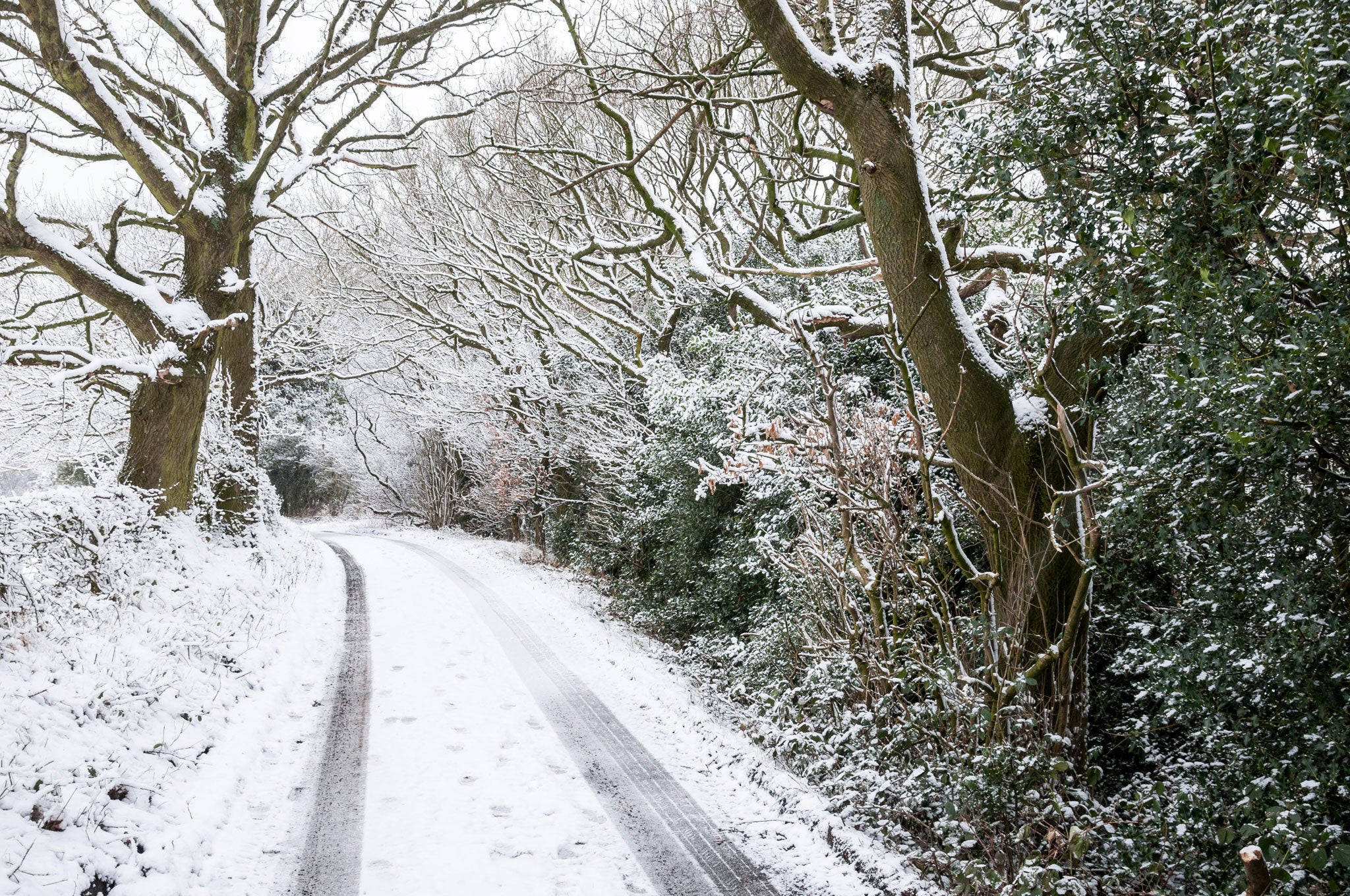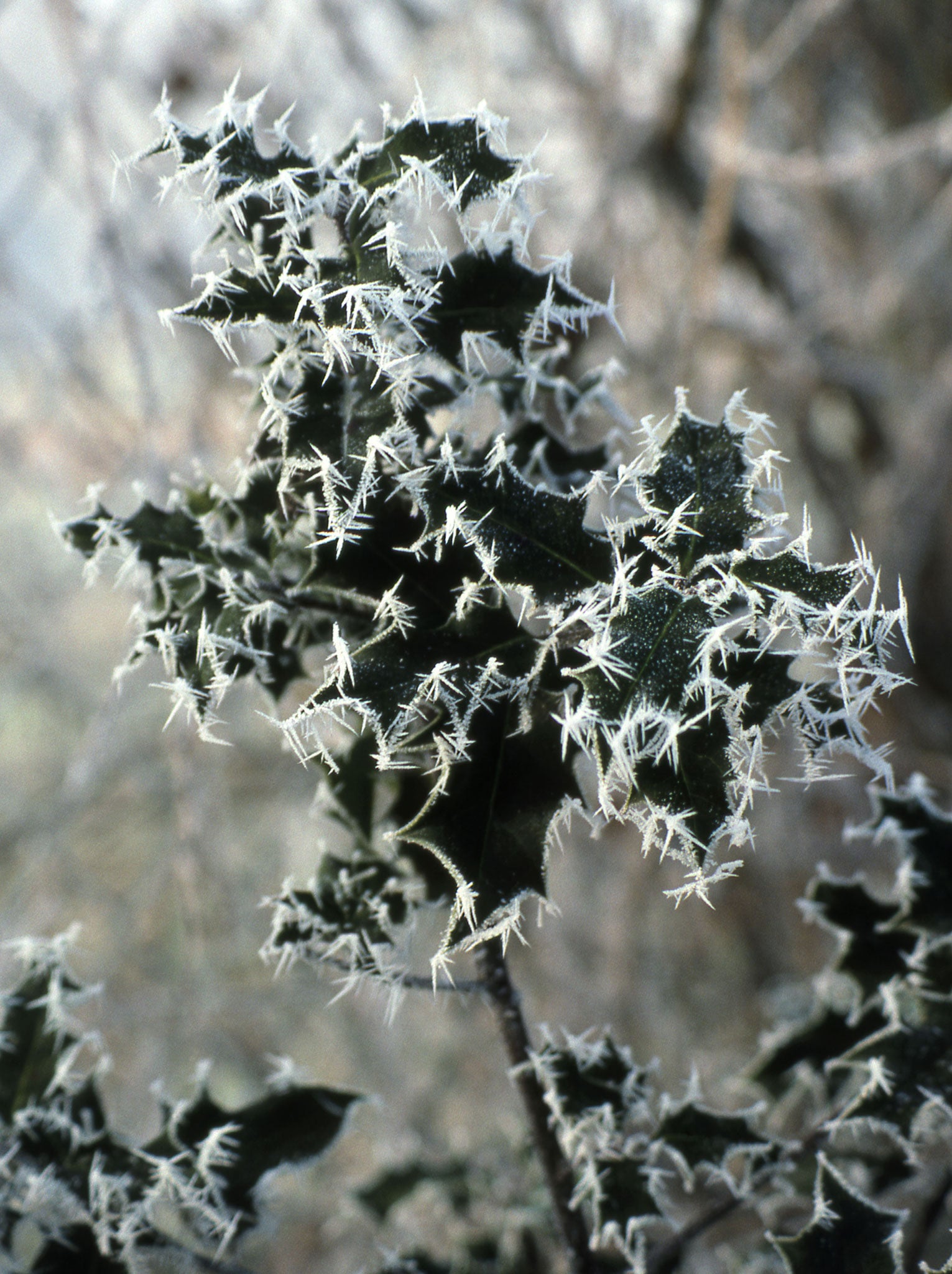Holly is slow to grow and beset by seasonal clichés - but it's the gift that keeps on giving
Holly is one of the UK's native evergreens and still commands great respect in the countryside, says Anna Pavord

'The holly and the ivy/ When they are both full grown/ Of all the trees that are in the wood/ Dum de dum dum dum de dum." You probably heard more than enough of this carol before Christmas, beamed into shopping malls, programmed into end-of-term nativity plays, so I won't press on any further. The words are quite weird though, suggesting the pagan figure of the Green Man lurking at the crib.
Holly, one of this country's rather small collection of native evergreens, carries plenty of symbolic baggage along with its berries. It stands for life in the bleak midwinter and, in country areas at least, still commands great respect. Even mechanical hedge cutters, which respect very few things, are guided carefully round a holly's smooth-skinned trunk. The dark green beacons rise up from lane hedges more often than any other tree.
How many billions of years did it take for holly to design its defence system? You can see why these evergreens need them. As winter strips the landscape bare of leaves, evergreens become magnets for browsers. Yew concocted a deadly poison; ivy, which sheep graze voraciously in winter, got itself off the ground and into the air; holly has its prickles.
The clever thing about the holly's prickles is that they work in so many planes. Leaves generally are flat, two-dimensional, like stencils. The holly leaf has a central midrib, like any other leaf, and eight pairs of veins branching out from the midrib in parallel lines to the eight spines on either side of the leaf. But then symmetry is abandoned and every point takes its own line. Some curl back under the leaf, some turn up to the sky, some fill the slanting voids in between. It means that whichever angle you approach it from, the leaf will jab you.
The way they turn must have to do with the relative rate of growth of the cells on the upper and the under side of the leaf. If the cells grow faster on the top, the point will be pushed down. If there is manic activity on the underside, the point will be forced up. But it's strange how each point knows what its neighbour is up to and makes sure to do something different. Defences, as medieval fortress builders quickly worked out, are much less effective if all points turn in the same direction.
Think of the leaf as a rugby forward line, said a botanist friend. If a winger, or next door point, darts off in a certain direction, the rest don't follow, but do what will be best for the team as a whole, covering the gaps where the winger isn't. Rugby players use their eyes to fix where they ought to be; leaves react to activity in neighbouring cells.
And yes, I know that a football analogy would be much more fashionable, but being Welsh, I was 22 before I ever saw a football game. It was at Liverpool and they were playing Everton, but for me the match had little of the drama of the Newport/Cardiff rugby jousts on which I had been brought up.
Hollies are underrated now because they are slow. We live in an impatient age, used to quick results. People move around more than they used to and don't particularly want to plant things that they won't get the benefit of. This is a danger in gardens. It leads to layouts that, like instant food, are ultimately unsatisfying. The ingredients are limited and, after the initial gratification, there is no lingering sense of longer pleasures. A holly can give you that – in spades.

In your garden, you can make a stand against the prevailing mood of the age. The great 18th-century landscape gardens were made at a time when their busy agricultural owners were fencing and hedging and parcelling and enclosing land. Capability Brown's idealised landscapes recreated the pastoral, dreamy past they were destroying – before turnips, before corn.
If the mood now is instant, disposable, then our gardens should become places where the opposite things are going on. We should be planting slow, steady, sustaining things. In the garden at least, if in no other part of our lives, we can plan a future. A satisfying garden is a resonant one and has things going on in it that are not of the here and now. Built into it are messages from previous owners of the garden and previous uses of the land.
Fewer people are the first-time occupiers of a house than live in places that others have lived in before. Even if the house itself is new, the space around it may carry hints of what happened there previously. Huge pear trees in suburban gardens round the outskirts of London remind us of the orchards that used to feed the tenement dwellers of the city. Big old bay trees planted close to houses recall the time when gardeners believed quite literally that "neither witch nor devil, thunder nor lightning will hurt a man in the place where a bay tree is" as the 17th-century herbalist, Nicholas Culpeper put it.
A holly at the bottom of the garden may be the last remnant of the natural landscape that existed before urbanisation spread over your patch. That is quite a comforting thought – a thread that connects the before with the after. It need not stop you gardening round it, planting cyclamen close to its trunk and ferns to unfold after the holly's berries have gone.
Some ecological gauleiters insist that only by planting wildernesses can gardeners attain to the ranks of the ecologically blessed. That is bunkum. The ecological soundness of gardeners has to do with their methods, not their choice of plants. A so-called 'wild' garden is not intrinsically better for the environment than a tended one, though different creatures will thrive in each. The holly, though, will stand for a little bit of unclaimed territory at the edge of your kingdom and will add immeasurably to the spirit of the place.
Even on the most immediate level, holly appeals for it is a handsome beast. The glossiness of the leaves, the brightness of the berries, the strange pallor of the trunk, combine to make it an especially arresting sight at this time of the year. Look for Ilex x altaclerensis 'Silver Queen' (male) with grey-green leaves edged in cream, broad-leaved 'Camelliifolia' (female), the gold-variegated 'Golden King' (female), 'Hodginsii' (male) with its irregularly-produced spines, the dark green leaves with bright yellow centres of 'Lawsoniana' (female), compact, dome-shaped 'Wilsonii' (female) and I. aquifolium 'JC van Tol' (female) with its large crops of berries.
Only female trees bear berries, but there must be a male tree in the vicinity to pollinate them. If you've no room for a tree, introduce a few small holly seedlings into a mixed hedge of natives, such as blackthorn and hawthorn.
WEEKEND WORK
WHAT TO DO
* Throw away your packets of chemical (inorganic) fertiliser and vow to do without them this year – at least everywhere except pots and other containers where plants can't be expected to survive on the measly ration of compost they have to grow in. High levels of inorganic fertiliser in the soil can suppress the growth of beneficial mycorrhizal fungi. They are more likely to be of benefit than anything you add from a bottle. Get more information on mycorrhiza from PlantWorks Ltd, 01795 411527, plantworksuk.co.uk
WHAT TO BUY
* Snowdrops sold by the Cambo Estate in Scotland grow in the 70 acres of woodland that surround the house. Each year, as flowering finishes, crowded clumps are dug up and hand sorted. Mature, flowering-size bulbs are sold, 'in the green' while the smaller ones are replanted for a future crop. Single snowdrops cost £9.50 for 25, £16 for 50; double ones are £11.50 for 25, £19 for 50. Cambo can also put together a Spring Starter Pack of bulbs for a new gardener: three leucojum, two clumps of aconite, 25 single and 25 double snowdrops, all for £41. To order, call 01333 450054, or email cambo@camboestate.com
Join our commenting forum
Join thought-provoking conversations, follow other Independent readers and see their replies
Comments